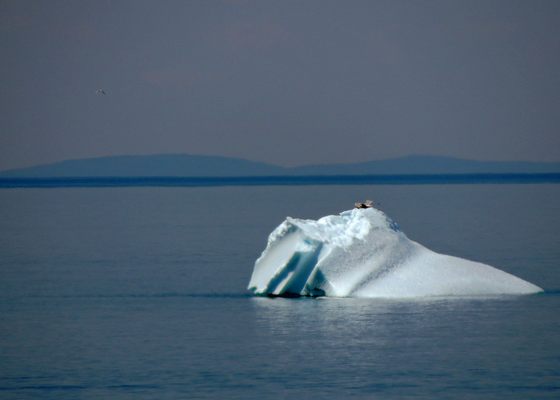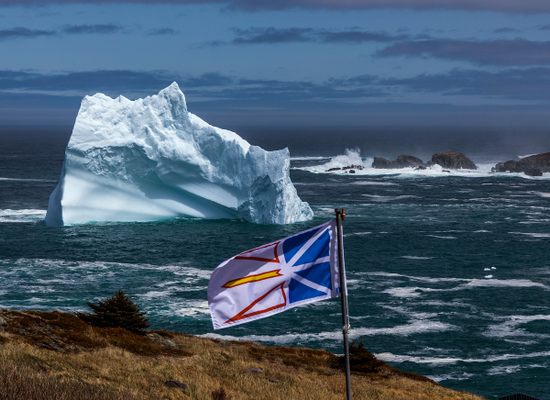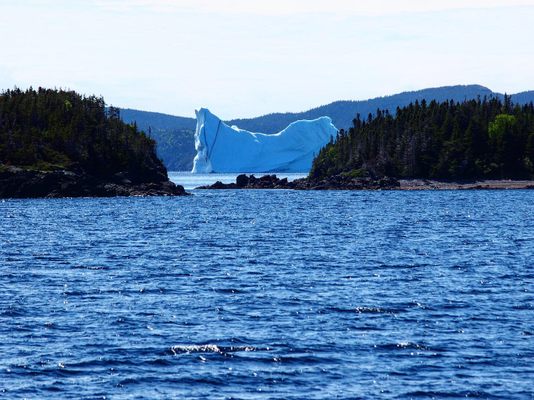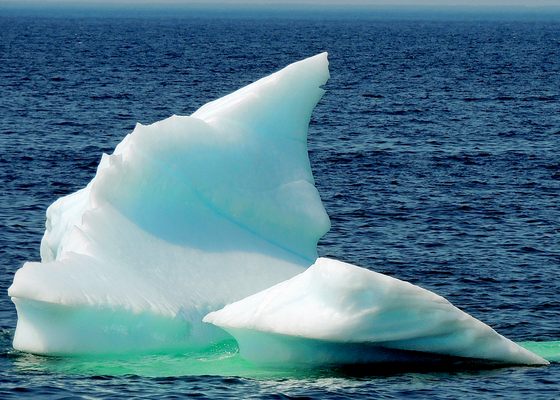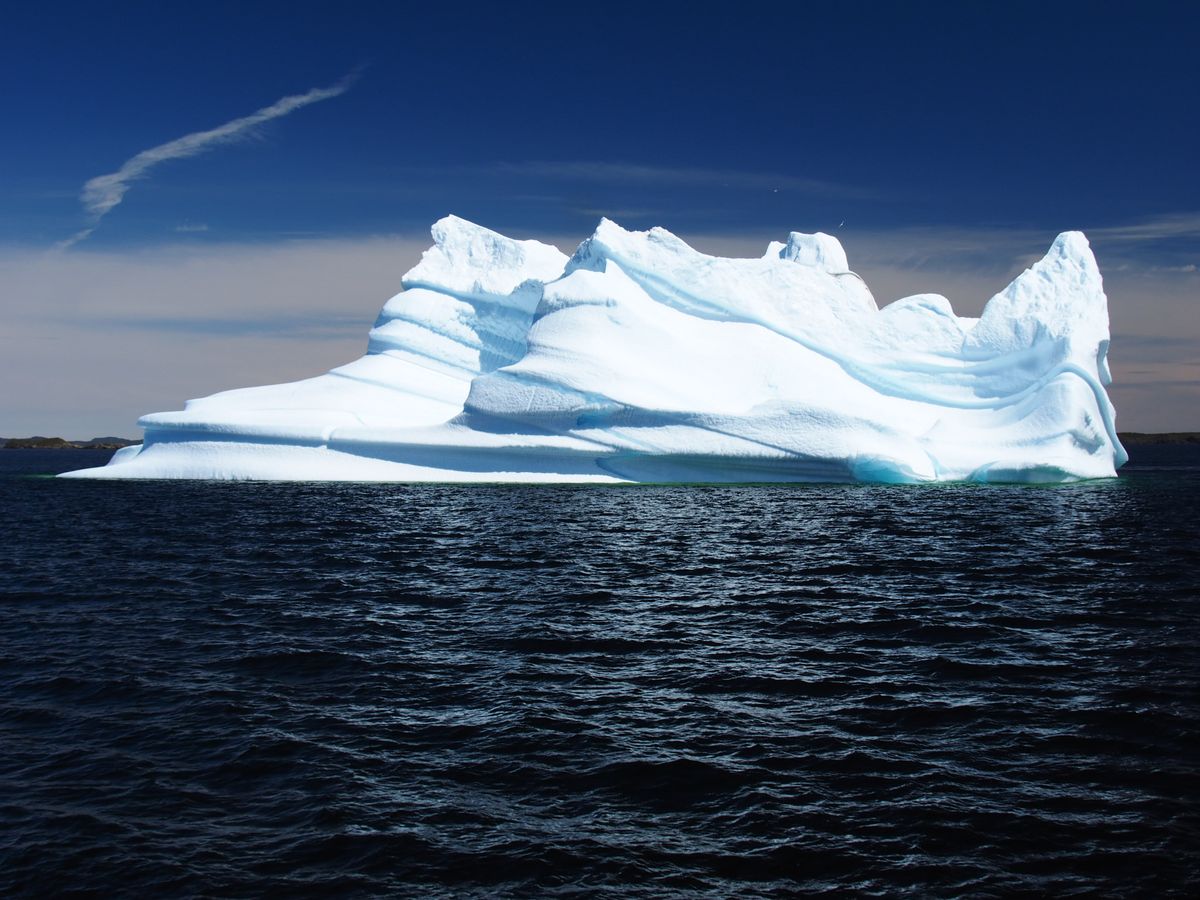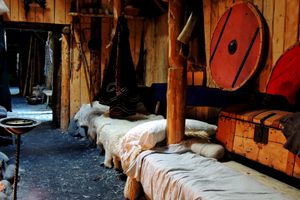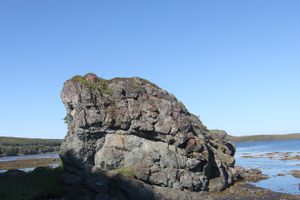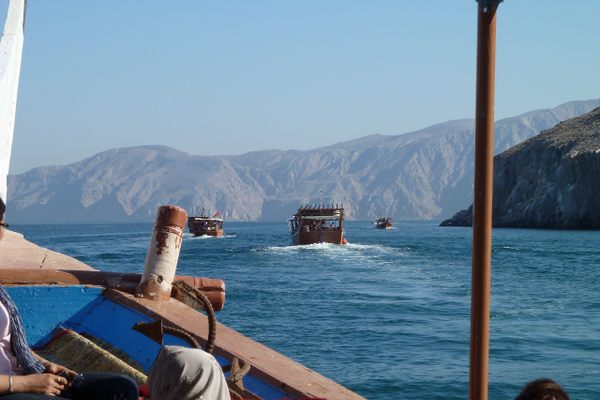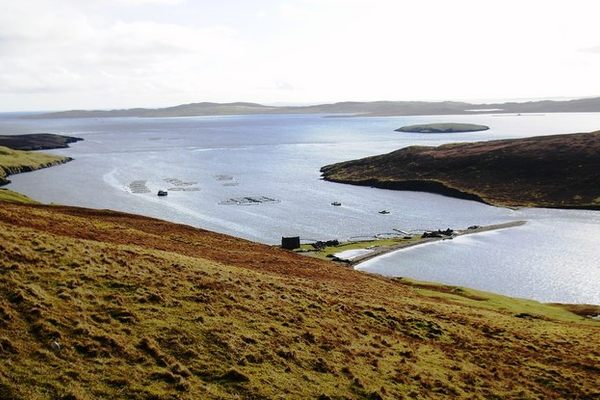About
Iceberg Alley refers to a stretch of the Atlantic Ocean that goes from the Arctic to Newfoundland. Most icebergs drifting through Iceberg Alley come from the coast of Greenland, when in the spring and summer, chunks of glaciers break off and north-south currents take them along the Baffin Bay and into the Labrador Sea, where they eventually melt.
A smaller percentage of these icebergs comes from the Canadian shoreline. Currents transport these behemoths from Baffin Bay through the David Strait into the Labrador Sea, and eventually along the eastern and western shores of Newfoundland.
The enormous chunks of ice are approximately 10,000 years old. It’s estimated between 400 and 800 medium and large icebergs flow along Iceberg Alley every year. Their speed depends on their shape and size, winds, currents, and waves, but the average is around 0.4 miles per hour. As for the expression “tip of the iceberg,” it comes from the fact that only about 10 percent of the iceberg is above water.
All six types of icebergs pass through Iceberg Alley. Tabular icebergs are flats slabs of ice, with the width vastly greater than the height. Blocky icebergs have steep sides and clear-cut angles, resembling truncated pyramids. Wedged icebergs have one steep slide and one sloping side. Dome icebergs have a rounded top. Pinnacle icebergs have one or more steep pinnacles protruding upward. Dry dock icebergs are U-shaped.
As icebergs drift south, warmer waters accelerate melting, which makes them dangerously unpredictable. It was one of these icebergs that in 1912 sank the Titanic off the coast of Newfoundland. Nowadays, icebergs are monitored using satellites that detect medium and large icebergs, but not usually small ones, which have become the most dangerous kind for smaller boats.
In 2018, a particularly large iceberg was drifting unusually close to the shores of a Newfoundland village called Ferryland, and the image of the giant iceberg dwarfing the village’s houses went viral. This particular iceberg became grounded in 330-foot deep waters, which proved to be shallow relative to its size.
Local breweries use the pure water of these icebergs to make vodka, gin, rum, and beer.
Related Tags
Know Before You Go
Iceberg Alley can best be appreciated from the land or the sea. The coastline stretching from St Lewis (north) to Point Amour (southwest) and Witless Bay (southeast). Boat tours can be organised in all major settlements along the shores of Iceberg Alley. Prime iceberg season starts in April and ends in June.
Community Contributors
Added By
Published
June 14, 2019



